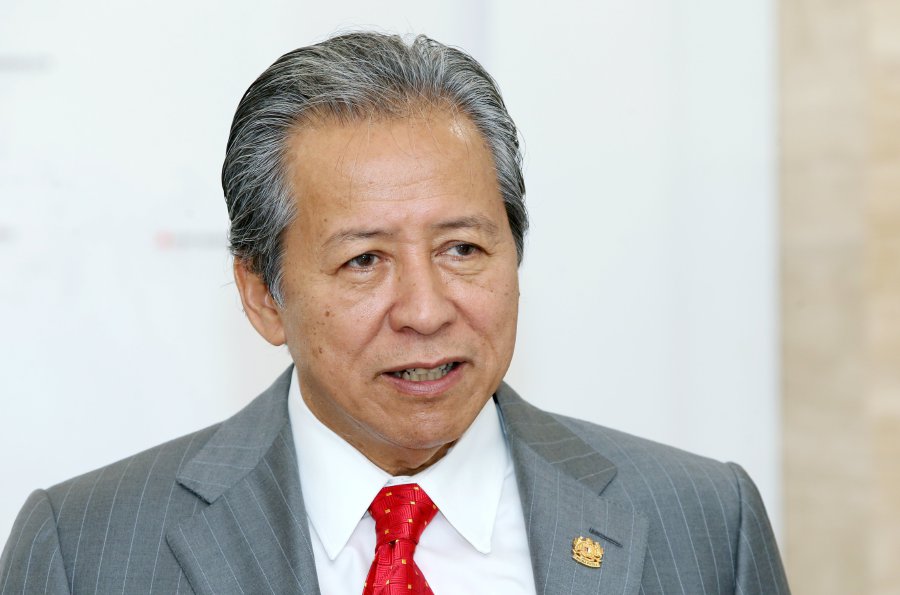
China’s fictitious ‘Nine-Dash-Line’
The International Tribunal in the Hague rejected claims to rights in the South China Sea, which is a landmark international decision on overlapping claims and disputes in South China Sea by many nations, most members of ASEAN.
BBC.com story:
Beijing South China Sea claims rejected by court
15 minutes ago
China has accelerated construction on some disputed reefs
An international tribunal has ruled against Chinese claims to rights in South China Sea, backing a case brought by the Philippines.
The Permanent Court of Arbitration said there was no evidence that China had historically exercised exclusive control over the waters or resources.
China described the ruling as “ill-founded”.
China claims almost all of the South China Sea, including reefs and islands also claimed by others.
The tribunal in The Hague said China had violated the Philippines’ sovereign rights. It also said China had caused “severe harm to the coral reef environment” by building artificial islands.
China’s Island Factory
Mysteries and maritime claims
In pictures: How the ruling affects the livelihood of Filipino fishermen
Why is the South China Sea contentious?
Flying close to China’s new islands
Rivalries underneath the South China Sea
The ruling came from an arbitration tribunal under the United Nations Convention on the Law of the Sea (UNCLOS), which both countries have signed.
The ruling is binding but the tribunal, the Permanent Court of Arbitration, has no powers of enforcement.
The US sent an aircraft carrier and fighter jets to the region ahead of the ruling, prompting an angry editorial in the Global Times, a strongly nationalist state-run newspaper, calling for the US to prepare for “military confrontation”.
Meanwhile, the Chinese Navy has been carrying out exercises near the disputed Paracel islands.
***************
And Bloomberg story:
China Has No Historic Rights to South China Sea Resources, Court Says
David Tweed
July 12, 2016 — 5:22 PM HKT
Honda’s Heavy Rare Earth-Free Hybrid Motors Sidestep China
International Court to Rule on China’s Sea Claims
Philippines challenged China’s sea assertions in Hague court
China claims more than 80 percent of South China Sea
China’s assertions to more than 80 percent of the disputed South China Sea have been dealt a blow with an international tribunal ruling it has no historic rights to the resources within a 1940s map detailing its claims.
“There was no evidence that China has historically exercised exclusive control over the waters or their resources,” the Permanent Court of Arbitration in The Hague said Tuesday in a statement. “The tribunal concluded that there was no legal basis for China to claim historic rights to resources within the seas falling within the ‘nine-dash line’.”
The case was brought by the Philippines, arguing that China’s claims don’t comply with the United Nations Convention on the Law of the Sea. While the court says the ruling is binding, it lacks a mechanism for enforcement.
China’s assertions are based on a 1947 map showing vague dashes — known as the nine-dash line — looping about 1,120 miles (1,800 kilometers) south of China’s Hainan Island and covering about 1.4 million square miles. It contends its claim is grounded in “historic rights” and reclaimed reefs and islands are its indisputable territory. China boycotted the arbitration process and vowed to ignore the result.
The ruling risks inflaming tensions in a waterway that hosts about $5 trillion of trade a year and plays a vital link for global energy shipments. China has stepped up its assertions under President Xi Jinping, straining ties with fellow claimants like the Philippines and Vietnam.
For a QuickTake explainer on China’s territorial disputes, click here.
“The result of the arbitration is non-binding as far as China is concerned,” Chinese Admiral Sun Jianguo said in June. “The Chinese government has already repeatedly made it clear that it will not accept it, will not attend the arbitration, does not acknowledge it and will not implement the result.”
The U.S. insists it has the right to protect freedom of navigation in the waters and has carried out voyages and flights near features claimed by China. In May, China sent fighters and warships to warn the USS William P. Lawrence, a guided missile destroyer, when it sailed close to one of its outposts in the Spratly Islands.
Many of the court’s findings concerned the rights to territorial seas generated by various features. China has reclaimed some 3,200 acres (1,290 hectares) of land and built ports and runways. Under UNCLOS, man made islands don’t generate maritime entitlements.
Scarborough Shoal
The Philippines brought the case to the court after China’s coast guard seized the Scarborough Shoal in 2012. Beijing declined to submit formal documentation in defense of its claims, though it filed a position paper in December 2014 arguing the Philippine submission was a sovereignty dispute and outside the court’s jurisdiction. The PCA rejected that argument.
China has completed at least one of three planned airstrips on the reclaimed reefs, and has installed lighthouses, radar and other facilities it contends are mostly for civilian purposes. It landed a civilian aircraft on Fiery Cross earlier this year and a military plane collected sick workers from the reef in April. China says it has the right to install weapons to defend its sovereign territory.
While the U.S. doesn’t take a position on the claims, it worked diplomatic channels to garner support for the court’s jurisdiction ahead of the ruling.
Map of China and Philippines claims to Scarborough Shoal
Map of China and Philippines claims to Scarborough Shoal
Foreign Ministers from the Group of Seven expressed concern over the territorial tensions in April. Chinese Foreign Minister Wang Yi said the G-7 shouldn’t “hype” the issue.
China’s actions have pushed some Southeast Asian nations closer to the U.S. and Japan. The U.S. started joint patrols with the Philippines in the South China Sea in March, while Japan has been supplying patrol ships to Vietnam.
“Countries across the region have been taking action and voicing concerns publicly and privately,” U.S. Defense Secretary Ash Carter said last month. “As a result, China’s actions in the South China Sea are isolating it, at a time when the entire region is coming together and networking. Unfortunately, if these actions continue, China could end up erecting a Great Wall of self-isolation.”
****************
These are the salient points to the decision made by the international tribunal at the Hague this morning:
Inquirer.net story:
Key points of arbitral tribunal’s verdict on PH-China dispute
By: Matikas Santos
@MSantosINQ
INQUIRER.net
05:34 PM July 12th, 2016
Demonstrators, police, and media gather outside the Peace Palace in The Hague, Netherlands, on Tuesday, July 12, 2016, ahead of a ruling by the Permanent Court of Arbitration (PCA) on the dispute between China and the Philippines over the South China Sea. China has intensified the drumbeat of its opposition to an international tribunal’s ruling expected Tuesday that could threaten its expansive claims in the South China Sea. (AP Photo/Mike Corder)
Demonstrators, police, and media gather outside the Peace Palace in The Hague, Netherlands, on Tuesday, July 12, 2016, ahead of a ruling by the Permanent Court of Arbitration (PCA) on the dispute between China and the Philippines over the South China Sea. China has intensified the drumbeat of its opposition to an international tribunal’s ruling expected Tuesday that could threaten its expansive claims in the South China Sea. (AP Photo/Mike Corder)
The international Arbitral Tribunal on Tuesday issued its award on the arbitration case between Philippines and China over the West Philippine Sea (South China Sea) dispute.
BACKSTORY: Philippines wins arbitration case vs. China over South China Sea
In a 501-page award, the Tribunal decided in favor of the Philippines and said that China does not have historic rights to the South China Sea and that their “nine-dash line” claim has no legal basis.
READ: Key points of arbitral tribunal’s verdict on PH-China dispute
Below are five key points included in the summary statement released to the media
(1)Historic Rights and the ‘Nine-Dash Line’:
The Tribunal concluded that, to the extent China had historic rights to resources in the waters of the South China Sea, such rights were extinguished to the extent they were incompatible with the exclusive economic zones provided for in the Convention.
The Tribunal also noted that, although 2 Chinese navigators and fishermen, as well as those of other States, had historically made use of the islands in the South China Sea, there was no evidence that China had historically exercised exclusive control over the waters or their resources.
The Tribunal concluded that there was no legal basis for China to claim historic rights to resources within the sea areas falling within the ‘nine-dash line’.
(2)Status of Features:
The Tribunal noted that the reefs have been heavily modified by land reclamation and construction, recalled that the Convention classifies features on their natural condition, and relied on historical materials in evaluating the features.
The Tribunal found historical evidence to be more relevant and noted that the Spratly Islands were historically used by small groups of fishermen and that several Japanese fishing and guano mining enterprises were attempted.
The Tribunal concluded that such transient use does not constitute inhabitation by a stable community and that all of the historical economic activity had been extractive. Accordingly, the Tribunal concluded that none of the Spratly Islands is capable of generating extended maritime zones.
The Tribunal also held that the Spratly Islands cannot generate maritime zones collectively as a unit. Having found that none of the features claimed by China was capable of generating an exclusive economic zone, the Tribunal found that it could—without delimiting a boundary—declare that certain sea areas are within the exclusive economic zone of the Philippines, because those areas are not overlapped by any possible entitlement of China.
(3)Lawfulness of Chinese Actions:
Having found that certain areas are within the exclusive economic zone of the Philippines, the Tribunal found that China had violated the Philippines’ sovereign rights in its exclusive economic zone by (a) interfering with Philippine fishing and petroleum exploration, (b) constructing artificial islands and (c) failing to prevent Chinese fishermen from fishing in the zone.
The Tribunal also held that fishermen from the Philippines (like those from China) had traditional fishing rights at Scarborough Shoal and that China had interfered with these rights in restricting access.
The Tribunal further held that Chinese law enforcement vessels had unlawfully created a serious risk of collision when they physically obstructed Philippine vessels.
(4)Harm to Marine Environment:
The Tribunal considered the effect on the marine environment of China’s recent large-scale land reclamation and construction of artificial islands at seven features in the Spratly Islands and found that China had caused severe harm to the coral reef environment and violated its obligation to preserve and protect fragile ecosystems and the habitat of depleted, threatened, or endangered species.
The Tribunal also found that Chinese authorities were aware that Chinese fishermen have harvested endangered sea turtles, coral, and giant clams on a substantial scale in the South China Sea (using methods that inflict severe damage on the coral reef environment) and had not fulfilled their obligations to stop such activities
(5)Aggravation of Dispute:
Finally, the Tribunal considered whether China’s actions since the commencement of the arbitration had aggravated the dispute between the Parties.
The Tribunal found that it lacked jurisdiction to consider the implications of a stand-off between Philippine marines and Chinese naval and law enforcement vessels at Second Thomas Shoal, holding that this dispute involved military activities and was therefore excluded from compulsory settlement.
The Tribunal found, however, that China’s recent large-scale land reclamation and construction of artificial islands was incompatible with the obligations on a State during dispute resolution proceedings, insofar as China has inflicted irreparable harm to the marine environment, built a large artificial island in the Philippines’ exclusive economic zone, and destroyed evidence of the natural condition of features in the South China Sea that formed part of the Parties’ dispute.
BACKSTORY: #InquirerSeven FAQ about the Philippines vs. China arbitration case
The Convention
Under the United Nations Convention on the Law of the Sea (UNCLOS) a coastal state needs to have land before they can claim rights to the sea. The international treaty has been signed and ratified by both the Philippines and China.
“You need to have land before you can have rights to the sea. It’s as simple as that.You cannot just have rights to the sea without owning land,” former Solicitor General Francis Jardeleza said in a forum at the University of the Philippines (UP) Law Center in 2014, citing the basic principle of UNCLOS.
China asserts it has “indisputable sovereignty” and “historic rights” to over two-thirds of the 3.5 million square kilometers South China Sea using its “nine-dash line” claim that overlaps with the UNCLOS-mandated 200-nautical-mile Exclusive Economic Zone (EEZ).
The line, encircling an area roughly the size of Mexico, overlaps territories claimed by the Philippines, Vietnam, Malaysia, Brunei and Taiwan. China argues that its historic rights justify the line. But the Philippines insists that these rights cannot be used to define sea borders.
The Philippines says since the South China Sea is mostly sea, there is no land mass or clumps of islands and rocks there large enough to generate sea borders that will span the over 2 million square kilometers China is claiming with its nine-dash line.
In recent months, China has conducted massive land reclamation activities turning submerged reefs into artificial islands capable of hosting military equipment and structures.
Unclos, however, does not recognize artificial islands and states that these are not entitled to a 12 nautical mile territorial sea nor a 200 nm eez.
Read more: http://globalnation.inquirer.net/140947/key-points-arbitral-tribunal-decision-verdict-award-philippines-china-maritime-dispute-unclos-arbitration-spratly-islands-scarborough#ixzz4ECXPXTfj
Follow us: @inquirerdotnet on Twitter | inquirerdotnet on Facebook
*************
This ruling, which would be treated as precedence, is expected because China had no evidence to furnish their claims on areas which they called ‘Nine-Dash-Line’.
China’s refusal to accept the ruling is also expected because their case is lame, based on unilateral pronouncement of the area by Kuomintang in 1947.
Recently, China already pre-empted that they will not recognise any international tribunal which include the United Nations Tribunal on the disputed overlapping territories, when the Philippines decided to take the matter for international arbitration in 2013.
China rejected the Hague ruling.
NST story:
China rejects Hague tribunal judgement
BY AFP – 12 JULY 2016 @ 5:54 PM
BEIJING: China “does not accept and does not recognise” the ruling by a UN-backed tribunal on its dispute with the Philippines over the South China Sea, the official Xinhua news agency said Tuesday.
The comments, in a brief dispatch that did not identify a source, follow a ruling by the Permanent Court of Arbitration in the Hague that China has no historic rights to its claimed “nine-dash line.”
Earlier, an international tribunal ruled that China has no legal basis to claim “historic rights” to islands in the South China Sea, in a bitter dispute that risks stoking further tensions in Southeast Asia.
“The Tribunal concluded that there was no legal basis for China to claim historic rights within the sea areas falling within the ‘nine-dash line’,” the tribunal said in a statement. –AFP
Read More : http://www.nst.com.my/news/2016/07/157869/china-rejects-hague-tribunal-judgement
**************
This would be another phase of game of geo-politics and crafty diplomacy, as China’s influence in the region is an upcoming military superpower as well as major trading partner, particularly amongst ASEAN nations which include the Philippines.
China is expected to be more aggressive in their manoeuvres, especially on the three installations already built presumably grr the China PLA-Navy purposes in the disputed areas.
United States Navy, which is a close ally to the Philippines would use the result on this tribunal and increased PLA=Navy maneuvres to heighten their presence and presentation of power.
ASEAN nations and China are supposed to finalise the Code of Conduct (COC), which all inked as Document of Conduct (DOC) in November 2002. They have agreed to fall back to UNCLOS, as the referral provisions to mitigate any maritime and matters pertaining to the sea.
However, COC is yet to be enforced since the negotiation process for the final document had not been completed at this stage.
It is interesting to observe the outcome of this landmark ruling.
*Updated 1815hrs



















